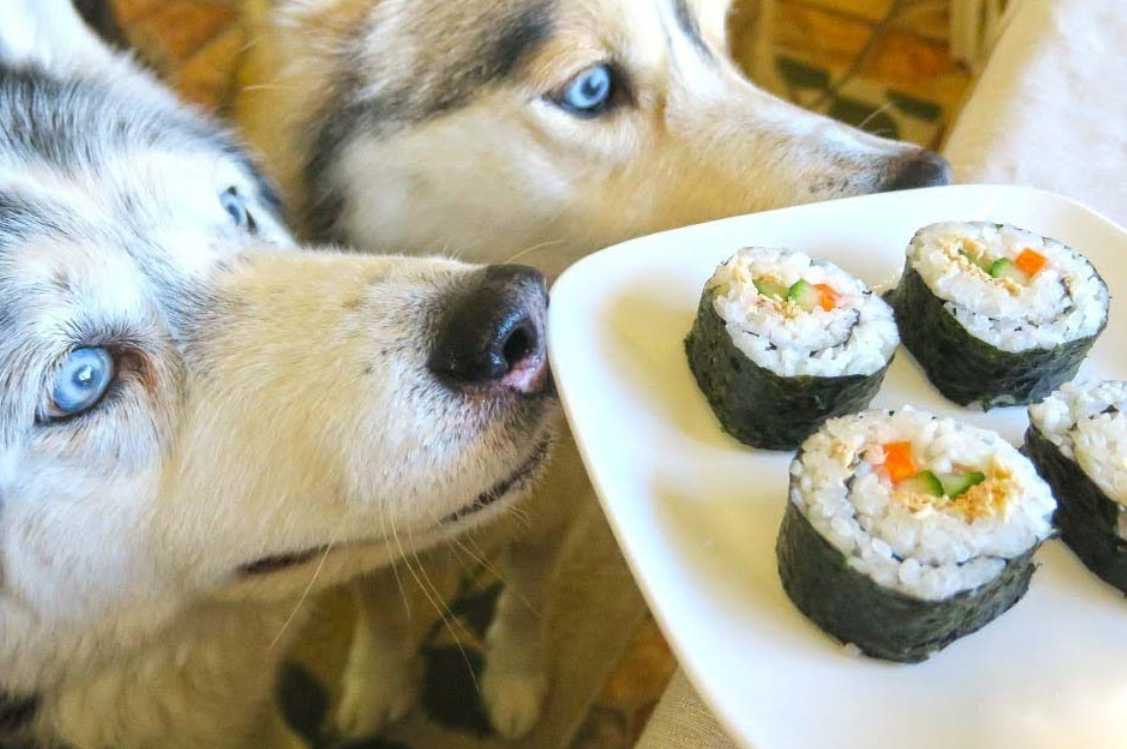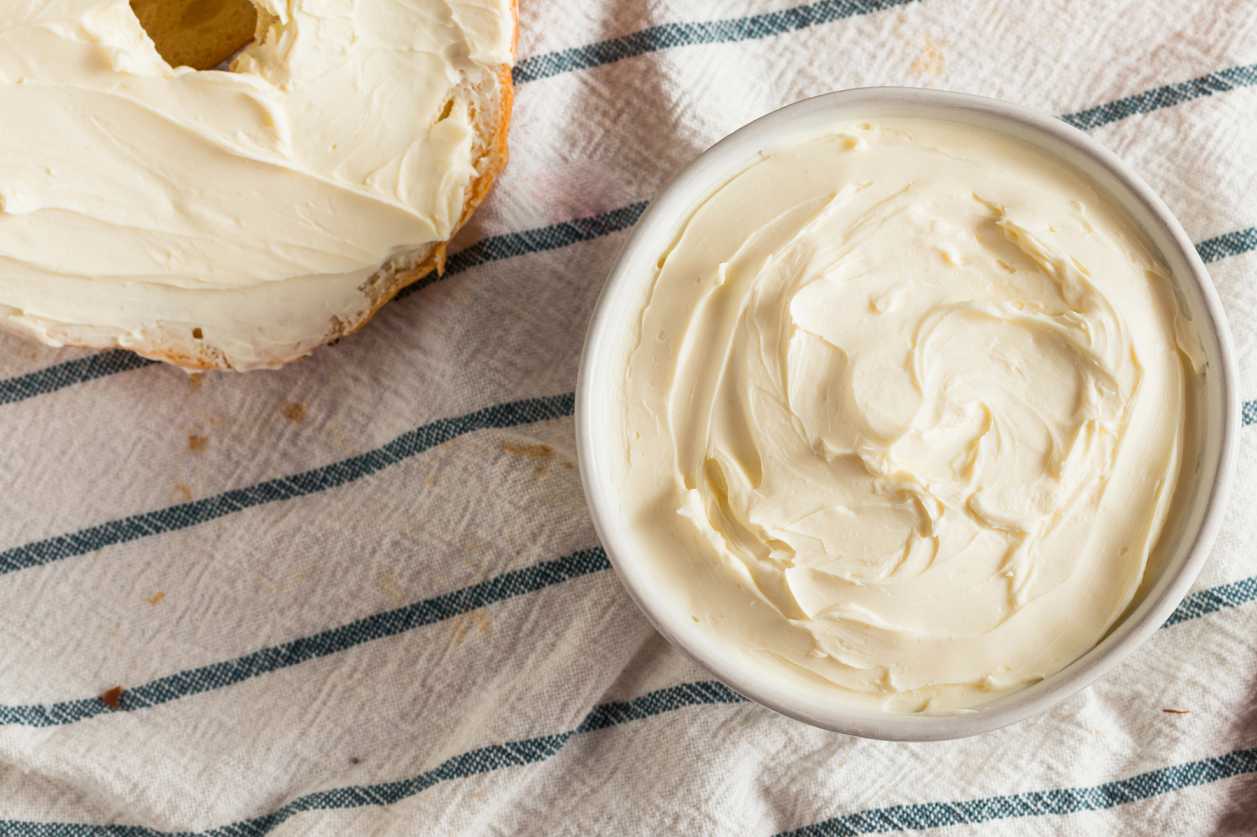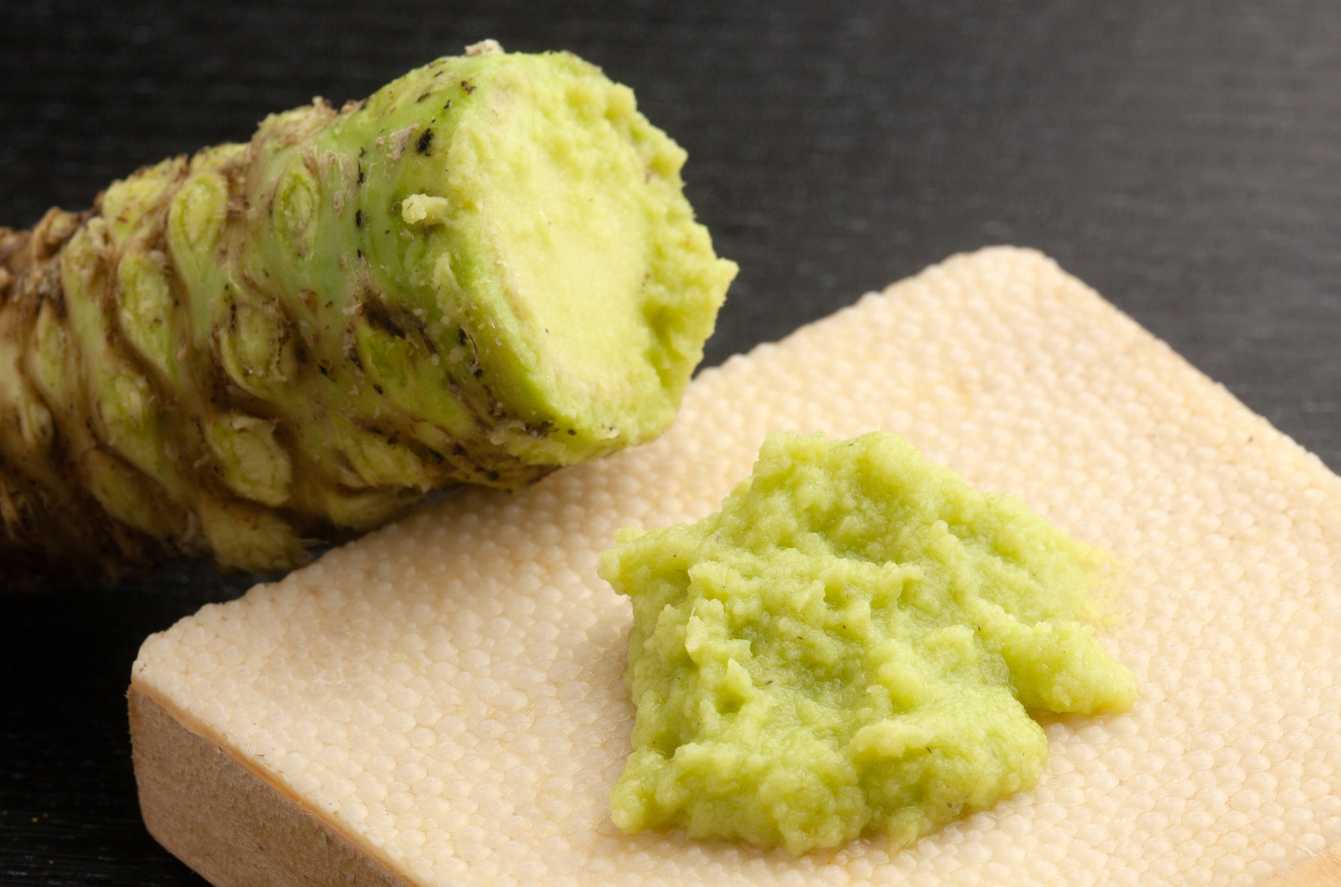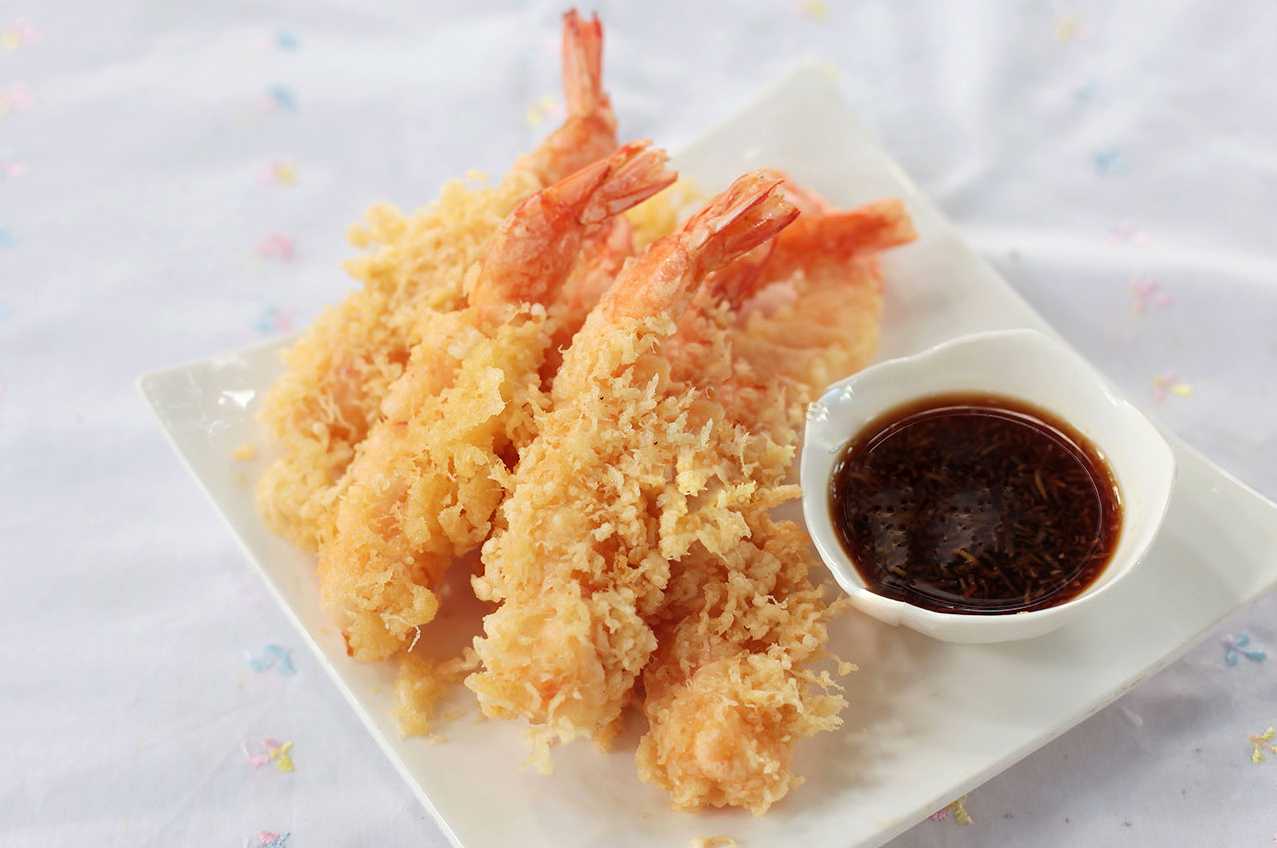People love sushi so much. It’s not only palatable but also nutritious. Are you worried if sushi is safe for your house friends?
You may wonder, “Can dogs eat sushi?” Will they not get sick if they eat sushi? Continue reading to see if your beloved pet can enjoy some sushi.
Is sushi safe for dogs?
Sushi is safe for dogs. There are even sushi shops designed exclusively for them. These are not sushi bars where pet owners may have sushi rolls alongside their pets, though there are many of those.
Sushi restaurants sometimes integrate pet services such as pet spas and supply shopping. These offerings allow your dog to enjoy delectable and nutritious sushi, too
Dogs may consume sushi, depending on the ingredients. Understanding what sushi is composed of will help you know if your dog can eat it or not.
You can give sushi to your dog if you follow feeding rules. It’s best served in moderation as an occasional treat, much like all “human foods.”
Sushi rice is acceptable for your dog, but you should avoid giving him anything with added sugar. The seaweed sheet also poses no risks for your dog to eat.
Fish is an excellent protein source, and most dogs appreciate it. You can serve raw sushi-grade fish, but parasites are always a possibility. Sushi with cooked fish is acceptable.
Sushi rolls may contain elements that dogs should avoid. So, you must exercise caution when offering sushi to your dog.
6 Popular Sushi Ingredients Not Safe for Dogs
Ingredients are crucial, especially if you wish to serve sushi to your dog. Here are a few common sushi elements that may put your pet at risk for health issues:
Avocado
Avocado flesh is acceptable for dogs to eat in tiny amounts. However, the avocado skin secretes the bacteria persin, which can poison your dog.
Avocados are a key ingredient in California rolls. Of course, you will not see or include avocado skin in sushi rolls.
If you’re preparing sushi rolls at home and there’s a risk your dog will steal a bite, ensure your rolls don’t have any skin. Additionally, always wash avocados before cutting them to avoid spreading bacteria from their skin to the flesh.
Cream Cheese
Cream cheese is high in fat and can cause your dog harm. While some fat is beneficial to dogs, excessive fat can result in weight gain, obesity, pancreatitis, and cardiac problems.
It’s critical to understand the fat content of the cheese you serve your dog. Please keep track of how much your pet eats.
Wasabi
Wasabi is a Japanese horseradish paste that can be hazardous to a dog’s digestive system. It is included in several types of sushi.
Mango
Mangoes are generally healthy fruit for dogs to eat. However, they are heavy in sugar. The high sugar content can raise your dog’s glucose levels and increase the risk of sudden weight gain and obesity.
Raw seafood
Sushi-grade raw fish and seafood can also endanger a dog’s health. The most serious hazard is that raw fish may carry deadly bacteria, flukes, and parasites.
It doesn’t mean your dog will get sick just because it consumed a parasite or hazardous bacteria. The digestive system of a dog is a harsh environment where many ingested germs perish quickly. Your dog’s immune system frequently eliminates those that survive.
Do not give the raw form of the following fish should to your dog. Some are likely extremely dangerous, while others are simply risky. Regardless, don’t risk the chance.
- Salmon
- Tuna
- Eel
- Crab
- Octopus
- Shrimp
- Sardines
- Yellowtail
Listeria and salmonella are two common bacterial diseases connected with raw fish ingestion. Both can compromise your pet’s immune system to the point of death.
Tuna is known for its high mercury content. Mercury poisoning can occur if your dog swallows too much mercury. Your pet might incur kidney damage, digestive problems, and even death.
Your dog can probably chew and digest small bones in fish. But these tiny bones may get caught on the route to the stomach. This condition can cause your dog to choke or suffer stomach damage.
Once in the stomach, gastric acids soften the bones, digested by the body. However, fish bones can be difficult for some dogs to digest.
Furthermore, dogs’ immune systems weaken as they age. So, avoid feeding raw fish to a senior dog. Also, if your dog has an immune system problem, make sure everything it eats is cooked.
Tempura
Typically, deep-fried batter, spicy mayo, or other condiments are used in tempura sushi rolls. Tempura rolls are a delightful human treat.
However, the additional sodium and fat can harm your canine dog. Your dog might suffer from sodium-ion poisoning if it consumes significant amounts.
How to Feed Dogs with Sushi
Make sushi for your pet dog; make sure it’s wholly cleaned before serving. Whether you offer your dog raw or supplement goodies, the sushi must contain adequate nutrition. Your dog may enjoy the meal without worrying about its health.
Make sure you use caution. It would be best to give your dog a slice or two as a treat once or twice a week. It also reminds you that the components are suitable for your dog’s tummy.
To ensure safety, you should feed your dog small amounts of cooked fish with no extra fat or sauce. It’s preferable to make sushi at home. You can keep track of the ingredients and quantities before serving them to your pets.
You should offer fish as an additional treat. You can also include it as part of a complete and balanced homemade meal, either cooked or raw. Treats, including fish, should never account for over 10% of a dog’s standard diet.
If your dog is a large breed and weighs more than 70 pounds, he can eat a few entire sushi rolls with no problem. But if your dog has known food allergies or sensitivities, avoid introducing a new ingredient to its diet entirely.
Begin by gradually adding a tiny amount to your pet’s regular meal. Gradually increase the amount until its digestive tract gets accustomed to the new feed.
Remember that moderation is key when feeding sushi to your dog. You don’t want to give your dog stomach problems because you overindulged in sushi with it.
Make sushi with items that your dog likes. Cut fish into small bite-size pieces if you include fish. If turkey or chicken is included as an ingredient, remove the bones.
Cut veggies, like zucchini, thinly to make it easier for them to consume. However, avoid including cucumber entirely because some dogs have allergies or dislike it.
Cook rice according to package instructions by adding water before cooking. You can set aside part of the sushi rice to form a sushi paste with tuna or sardines.
Fill nori sheets with veggies, seafood, or meat to make sushi rolls. Before serving the sushi to your dog, cut it into small bite-size portions.
Health Benefits of Feeding Sushi to Dogs
Vitamins and Minerals
Sushi is rarely produced with only rice and seafood. It contains nori and seaweed, which are rich in minerals and vitamins. These nutrients are essential for your dog’s health.
The seaweed used as wrapping material typically contains significant quantities of calcium. Soy sauce is mostly water and, more crucially, salt. This mineral compound gives critical sodium to your dog and facilitates digestion.
Additionally, sushi contains no wheat, making it suitable for dogs with wheat allergies or sensitive stomachs. Sushi is high in protein (more than beef), essential for growing puppies.
Any vegetables you add to the dish can benefit your dog. For example, cucumber, a popular sushi vegetable, is high in vitamin K and low in calories. In addition to omega-3 fatty acids, fish provides vitamin D and B2.
When making sushi, the sort of fish you use has a significant impact on this nutrient. To date, the following species are known to have the highest omega-3 content:
- Mackerel
- Herring
- Cod
- Salmon
- Anchovies
Omega-3 fatty acids have been discovered to reduce the incidence of heart ailments, dementia, and arthritis in both people and dogs. Arthritis affects all senior canines, regardless of how much their keepers wish to avoid it.
Satiation
Sushi contains rice as the most significant element in this dish. The rice content can keep your dog satiated longer. Like jasmine rice, sushi rice contains many fiber and B vitamins. It is effortless to digest for dogs.
Brown and white rice are excellent sources of nutrition for dogs. Their high fiber content will also help with any GI troubles your dogs may be experiencing.
However, remember that rice isn’t the healthiest food for dogs because it’s high in calories. Dogs are partially carnivorous. They shouldn’t consume too many grains.
Too much rice can be harmful to your pets. Sushi contains a lot of rice. Regularly feeding it to your dog may upset its stomach and potentially cause malnutrition.
Despite the considerable amount of rice that vegetarian sushi may include, it is generally safe to offer dogs. Additionally, if your dog is tiny, it can keep them satisfied for an extended period, perhaps even several hours.
Summary
Can dogs eat sushi? There are so many different types of sushi and so many different ingredients.
Sushi is generally safe for dogs. However, you should precisely know what you’re feeding your dog. Check for any unusual foods or flavors that your dog would be better off without.

Hiroshi Nakamura, a Tokyo-born sushi chef turned US-based writer and critic, is the voice behind ichisushi.com, blending traditional sushi wisdom with modern insights.








